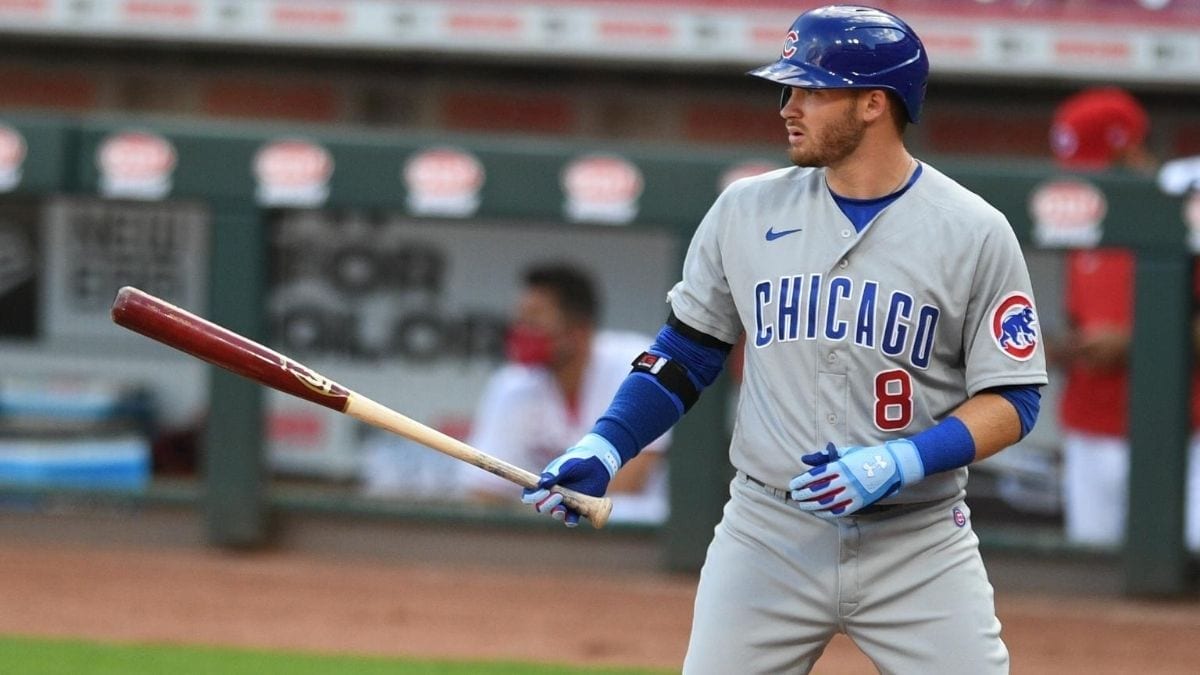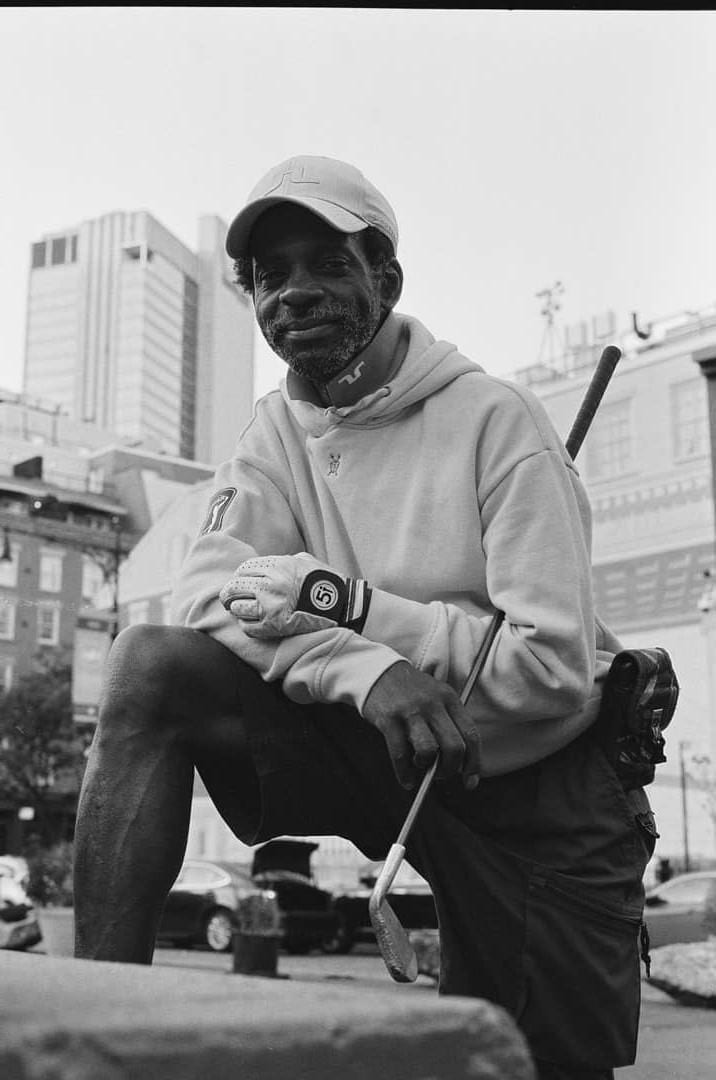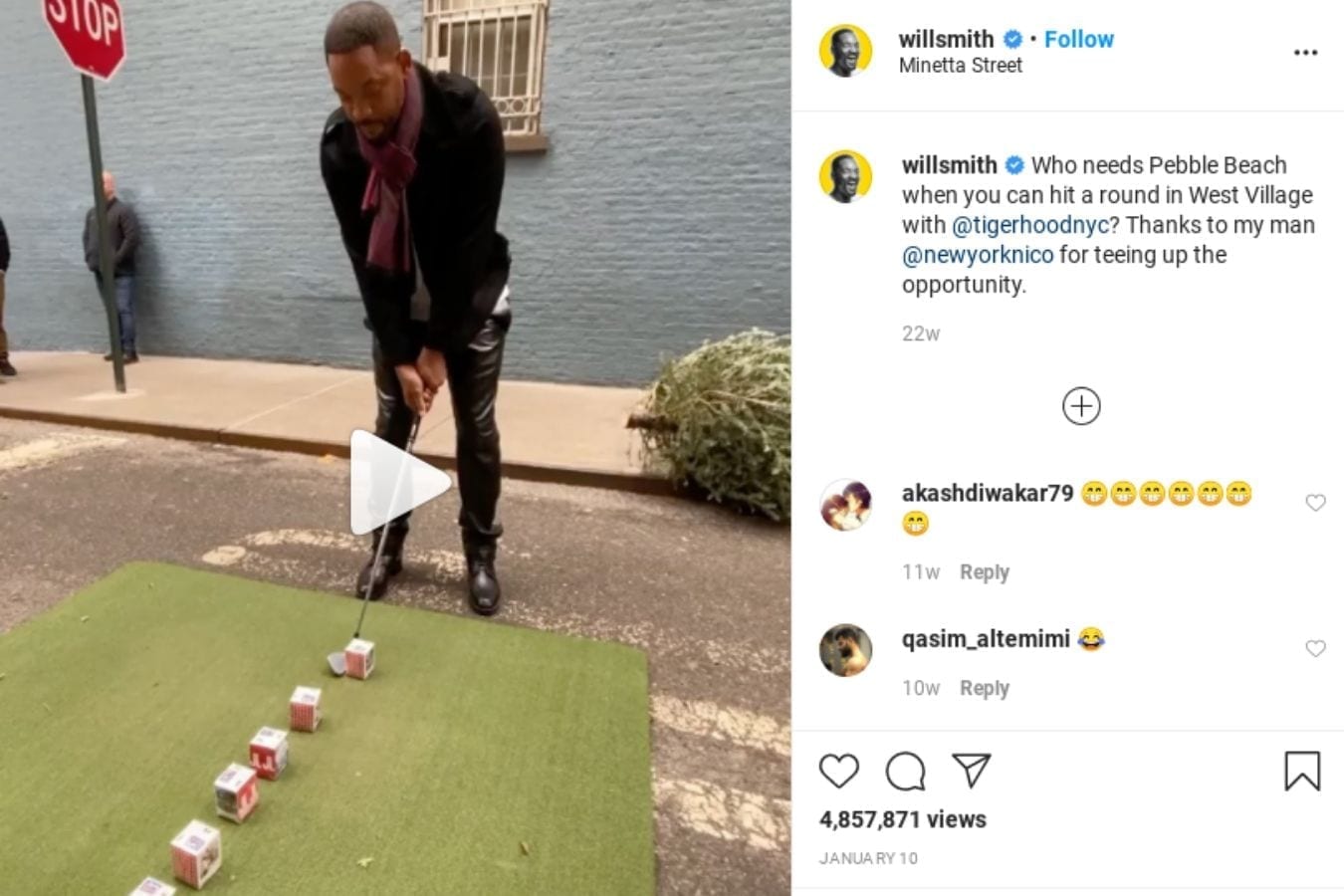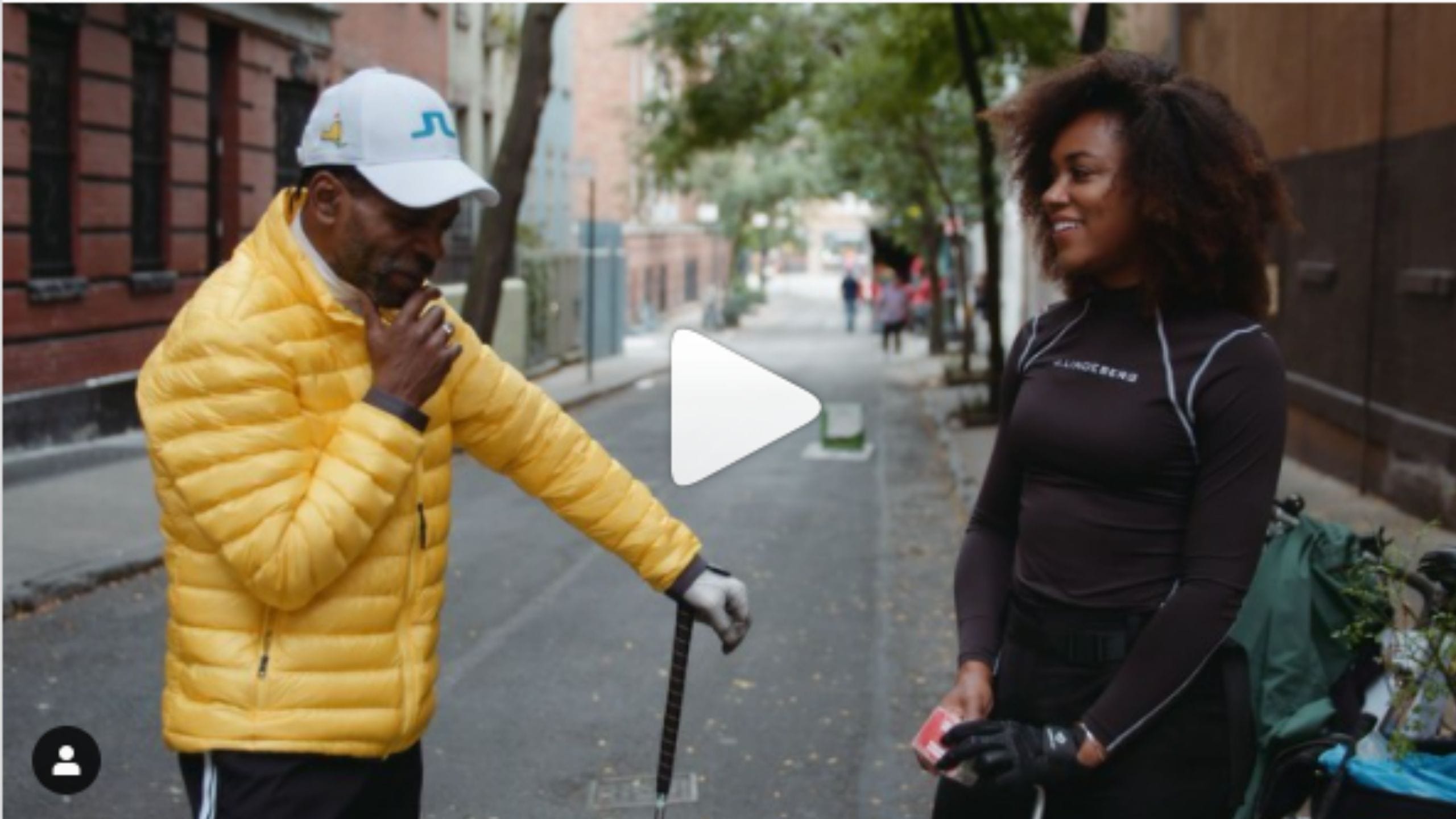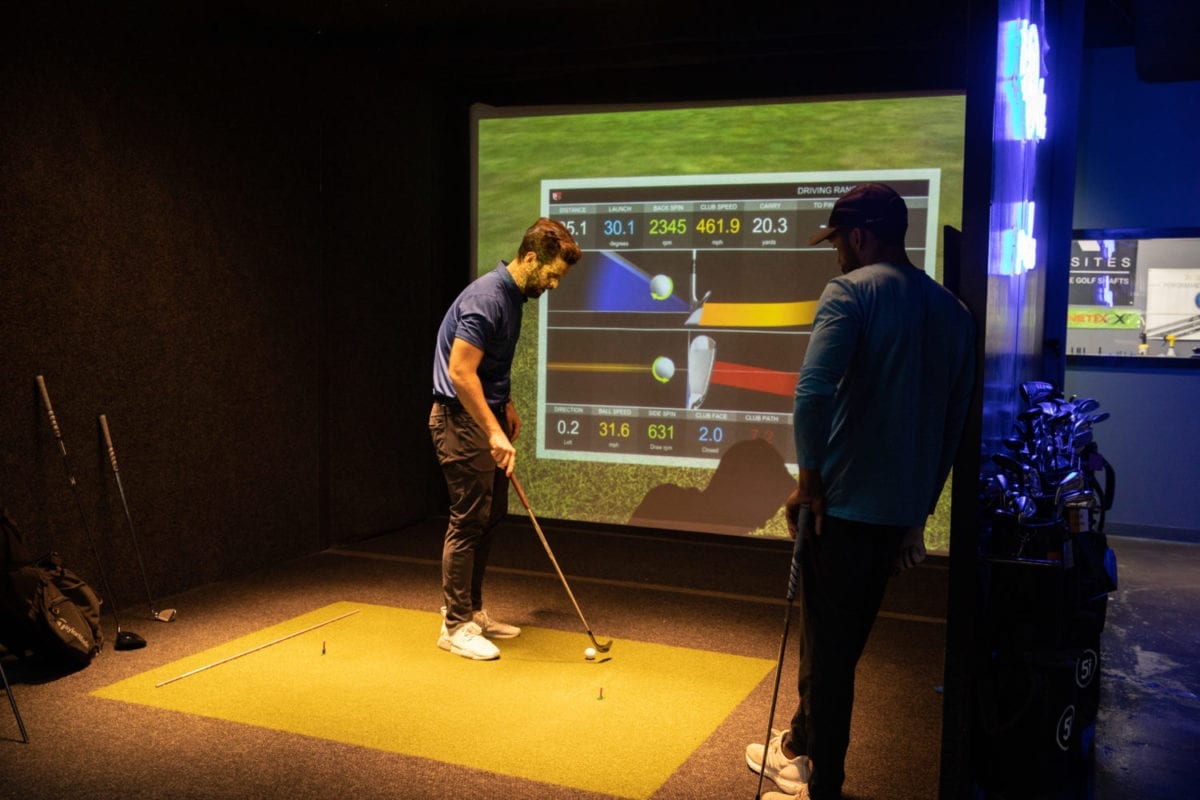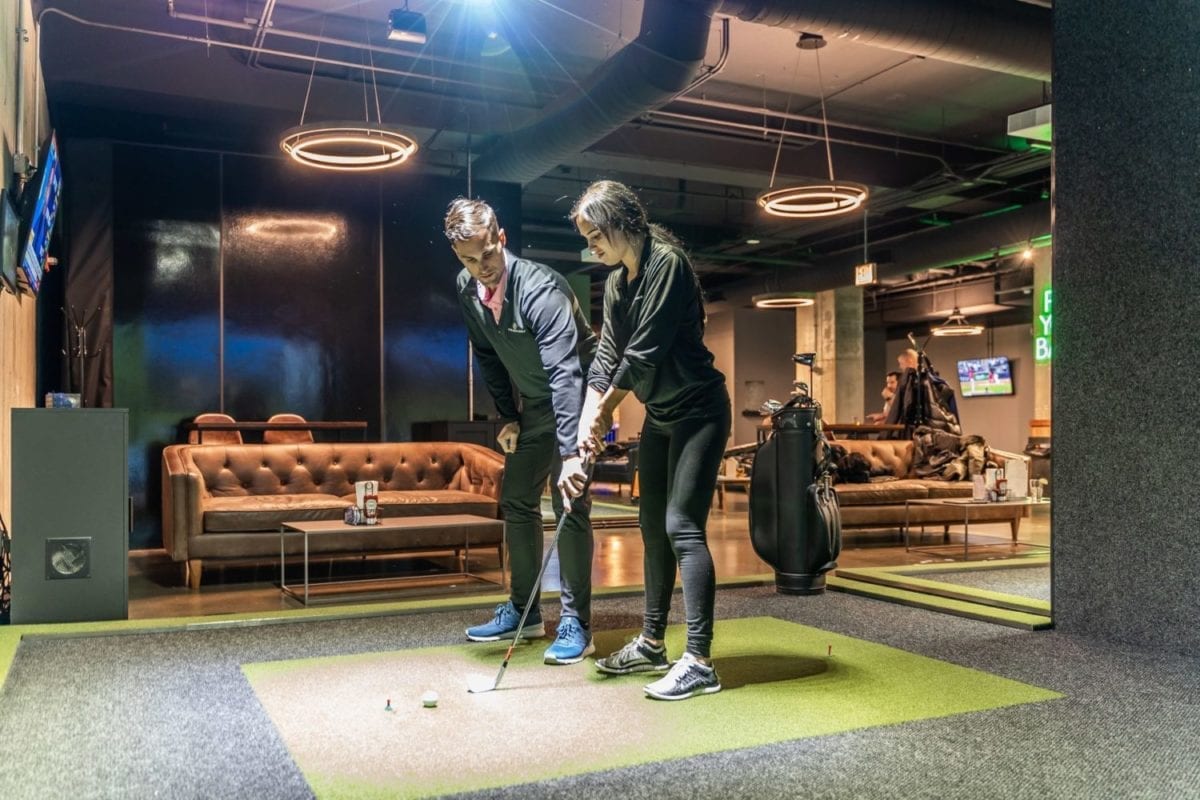Five Iron and Chicago Cubs outfielder Ian Happ teamed up to raise money for Feeding America by offering their communities a chance to bid on a variety of golf experiences and merchandise, including a round with Ian Happ at the esteemed Rich Harvest Farms. Raising just under $15,000, the give-back initiative furthered the excitement of having Ian Happ, known for his community-driven success on and off the field, as a Five Iron ambassador. We caught up with Ian to learn more about his other charitable ventures, his golf game, and how he spent his time during MLB’s shutdown.
01 | So, Ian, when did you start playing golf and how did you get into the game?
I had a club in my hand at 18 months old. My Dad was a scratch golfer and began work as a course superintendent before working for the USGA as an agronomist, so I grew up around the game. We lived in the Philadelphia area but then moved to Pittsburg so I really grew up playing at Chartiers Country Club. I have a great relationship with the superintendent and head pro there so I always try to get out there when we play the Pirates. It’s fun to be able to go back to the place where I learned to love the game.
02 | How was life in quarantine? Did you learn any new skills?
When everything started shutting down mid-March, I invited some of my teammates to Arizona and ended up with a great group of guys living with me. Dakota Mekkes, Zack Short, and I started The Compound podcast, were able to get outside and train together and actually the golf course in Arizona stayed open, so we were playing a bunch of nine-hole rounds. We’d go in the evening and walk nine-holes, just taking anywhere from two to five clubs. Never took a full bag, we would just take something like a five iron, a putter, a two iron or a wedge. We kept it fun and played two on two matches.
Podcasting is definitely the number one new skill. It’s been really fun to connect with the fans through that new avenue while also learning how to put it all together. We discuss our baseball experiences and interview various guests. I do the editing and we had to buy new equipment for it so there was a learning curve for sure, especially for how to interview guests properly. We’ve come a long way though and have put together some nice interviews.
03 | We heard you recently shot a 69 while playing with PGA Tour player Joel Dahmen and Cubs teammate Kyle Schwarber! Unfortunately, Joel still had you by 11 strokes, shooting a ridiculous 58. How was that to experience and would you consider yourself the best golfer on the Cubs?
Watching Joel fire off a 58 was incredible, by far the craziest thing I’ve ever seen on the golf course. Schwarber and I were in awe all day. Luckily Joel and I were on the same team so we beat up on Schwarber and his partners. As far as the best golfer on the team goes… Kevin Streelman just gave me a nice shoutout in a recent interview, we play together in AZ a fair bit, so I’ll defer to the professionals on that. I think Hendricks could give me a run for my money, but he doesn’t play all that much. He’s got a beautiful swing but it’s tough to get him out on the course. So yeah, right now I could take on any of them.
04 | If you had to pick one club to play with, which club would you choose?
When I was playing nine-hole matches with the guys I got a taste of what a one club round would be like and I would definitely choose a five iron! Actually, it’s what I would recommend as lessons for anybody. Just taking two to five clubs out really made us much better players because you’re forced to learn to hit a bunch of different shots. After playing like that for almost two months, I shot three-under and even-par in my first two rounds back.
05 | Which of your baseball skills translates best to golf?
As baseball players, we learn how to generate power as hitters and that definitely helps me hit it a long way on the course. But the mental side for sure translates. My mental game in golf helps my baseball, and my baseball my golf – they work together. Because baseball is such a game of failure, understanding that one bad shot in golf isn’t going to derail your round is a huge advantage.
06 | What do you like most about the Five Iron experience?
For me, it’s the space and how it is designed. Being able to have your own area, you have all the privacy that you want. But at the same time, if you want to interact, if you want to be at the bar talking to people, you can do that. It’s cool to have the flexibility to really grind hard on your game and practice with Trackman while also having a few drinks and fun with friends.
07 | Do you have a favorite beverage you enjoy at Five Iron or on the course?
My go-to is a Tequila and Ginger Ale and I try to ride that out for nine holes!
08 | Can you tell us about The Happ Family Charitable Fund and your new Quarantine Coffee?
In starting The Happ Family Charitable Fund, the most important thing for us as a family was to give back to the City of Chicago. The city has been so great and accommodating to both me and my family. It’s home for me now. I really appreciate all the fans that come out and support us every single day so to be able to give back and help them is very important to me.
Quarantine Coffee is a venture with myself and Connect Roasters, who are based about an hour south of Chicago. I reached out to the founder after trying his coffee. I fell in love with how smooth and how great their roasting press was so I pitched him the idea of Quarantine Coffee to help the Chicago community during this crisis. We were able to bring it to the market within two weeks and $3 from every bag sold goes directly to COVID-19 relief charities, including the Greater Chicago Food Depository and Save the Children. We’re super excited about it and the response has been great.
09 | How has being reunited with your team while also playing an unprecedented season in these uncertain times been? Is there anything in particular that has surprised you about it?
It’s been great to be back into the field with my teammates and best friends. Honestly I couldn’t pick a better group of people to be going through this with. It is unprecedented, it’s definitely more challenging than I ever could have imagined but I’m just happy to be playing for the fans. I think the most surprising or interesting part is seeing different parts of the stadium I never knew existed. For social distancing purposes we’re utilizing a lot of the stadium that fans would be in that we’ve never used before and it’s cool to see the field and game from that perspective.

